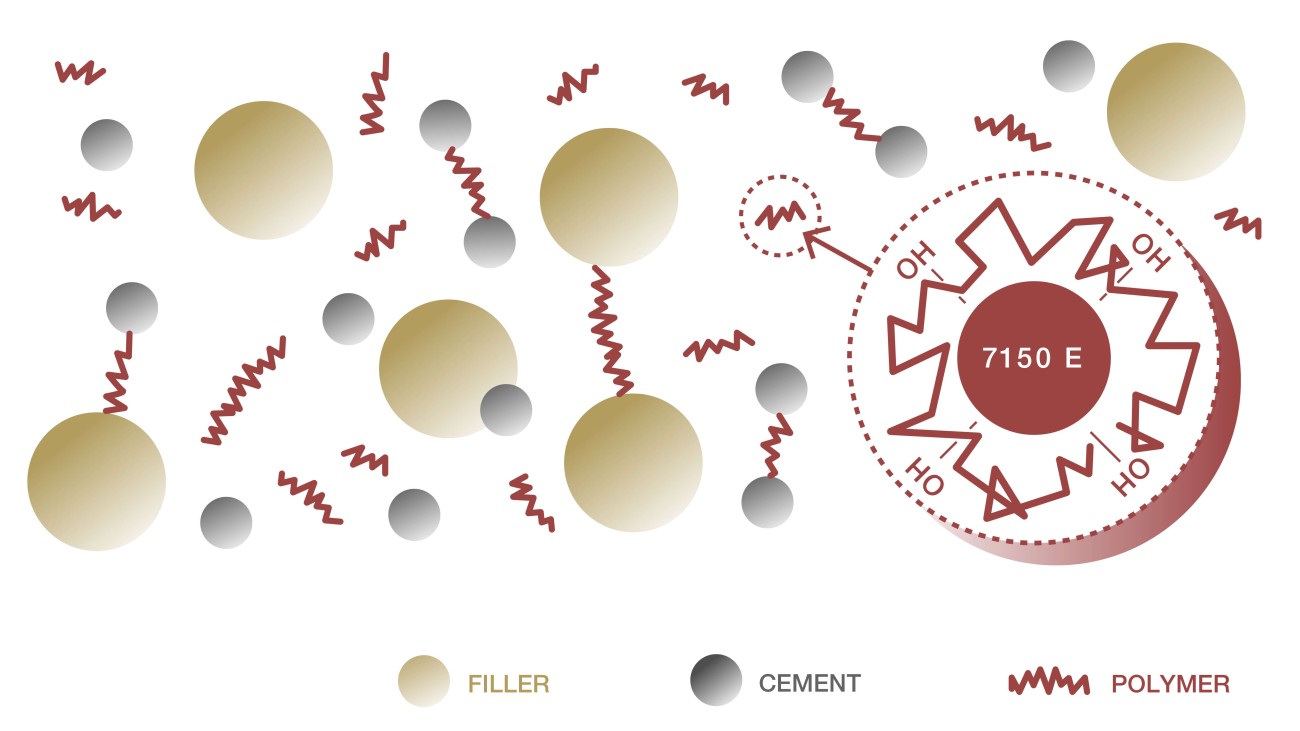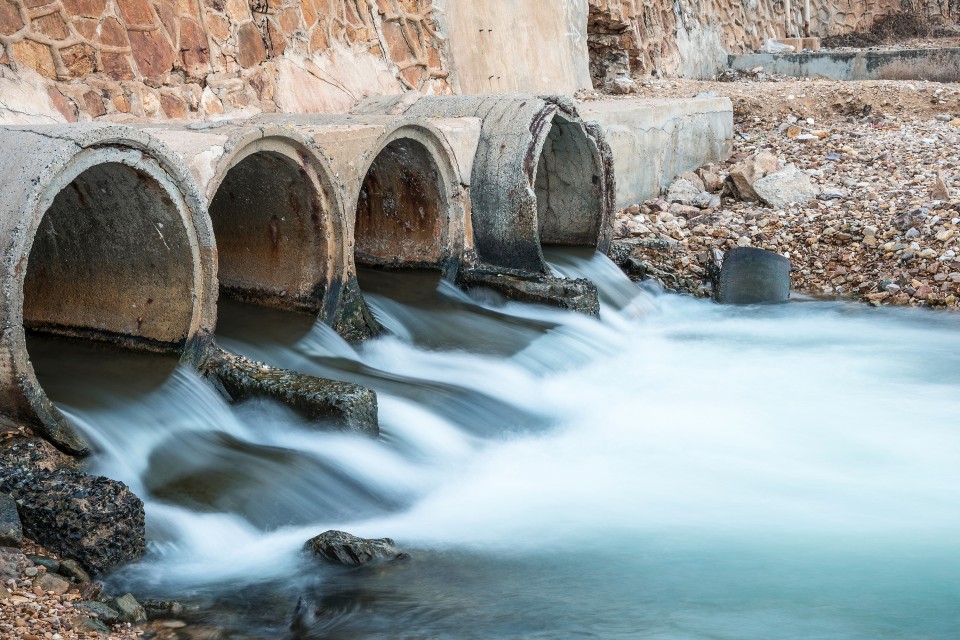
Thin layer protection against penetrating water
Mar 01, 2019 Read time: approx. MinutesMinute
Standing Up to Damp
Waterproofing membranes ensure that unwelcome damp does not penetrate through floors and walls. But as they have a high polymer content of up to 30% and are applied in layers just two millimeters thick, they are not that easy to process. In VINNAPAS® 7150 E, WACKER has now launched a dispersible polymer powder for formulating waterproofing membranes that possess better non-slump properties and are easier to handle.
Don’t go any further! Waterproofing membranes deal with unwanted damp in the same way as bouncers treat unwelcome guests. The barrier layers step in to prevent damp from causing any trouble inside or outside a house. Waterproofing membranes provide basement walls, terraces, and bathrooms with a thin layer of protection which nonetheless keeps out penetrating water that might otherwise damage the building fabric and cause mold. “Swimming pools and water tanks also need these kinds of cementitious mortar barriers,” says Dr. Hardy Herold, head of a technical laboratory for construction applications at WACKER POLYMERS. The sealing layers are applied direct to the surfaces needing protection. They can then be covered with other, appropriate materials, such as tile adhesives and tiles in wet rooms, and bituminous sheets on flat roofs.

Using a Plastering Trowel
The tools that tilers use to apply these membranes vary across Europe. In southern Europe, they prefer brushes, whereas in German-speaking countries they tend to favor notched plastering trowels. The latter may have notches measuring four millimeters in length. “In the tilers’ hands, these produce a uniform layer of waterproofing membrane with narrow ridges of precisely that height,” explains Herold. “The tilers then smooth the membrane surface with the other, smooth side of the trowel.” This step ensures that the layer has the necessary two millimeters’ thickness required by German “PG-MDS” waterproofing-membrane standards.
However, the desired results can only be achieved in practice if the waterproofing membrane possesses the optimum properties. The key to success here is its rheology or flow characteristics. The rheology determines the degree of slump in the cement mortar, i.e. whether the ridges remain standing or collapse. As binders that make up as much as 30% of a waterproofing membrane, dispersible polymer powders play a lead role here.
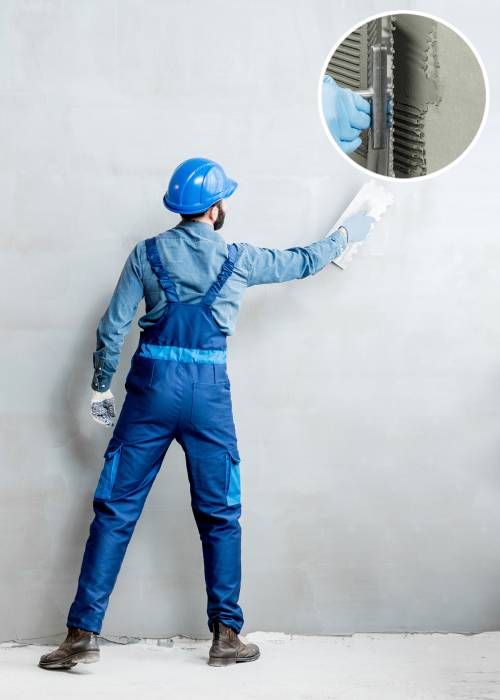
In southern Europe, builders prefer brushes to apply waterproofing membranes, whereas in German-speaking countries, they tend to favor notched plastering trowels.
“Satisfactory non-slump properties were hard to achieve with our existing product portfolio,” says Herold. “The binders are eminently suitable for brushable waterproofing membranes, though, which are less demanding in this regard. But for German-speaking countries, where trowels are the main application tool, the dispersible polymer powders proved unsuitable.”
To open up this market, Herold’s team needed to impart better non-slump properties to the WACKER products. So, they set about modifying the formulation for the dispersible polymer powders and ended up developing a new product: VINNAPAS® 7150 E. The binder which the construction chemical experts created offers enhanced rheological properties for waterproofing membranes.
Standing Up to Damp

For the base polymer, they opted for a tried-and-true product, namely VINNAPAS® 7055 E. It consists of a combination of vinyl acetate-ethylene polymers and vinyl esters. “We originally tried to boost the non-slump properties of the compound by incorporating additional thickeners. But that didn’t work,” says Herold. “We eventually hit upon using newly developed protective colloids and silica particles, and they worked a treat,” he added. “Thanks to the modifications, when the dispersion is spray-dried, it yields a powder which contributes much more rheological stability and increased non-slump in the end product.”

The polymer-modified dry-mix mortar is redispersed with water at WACKER’s applications laboratory.
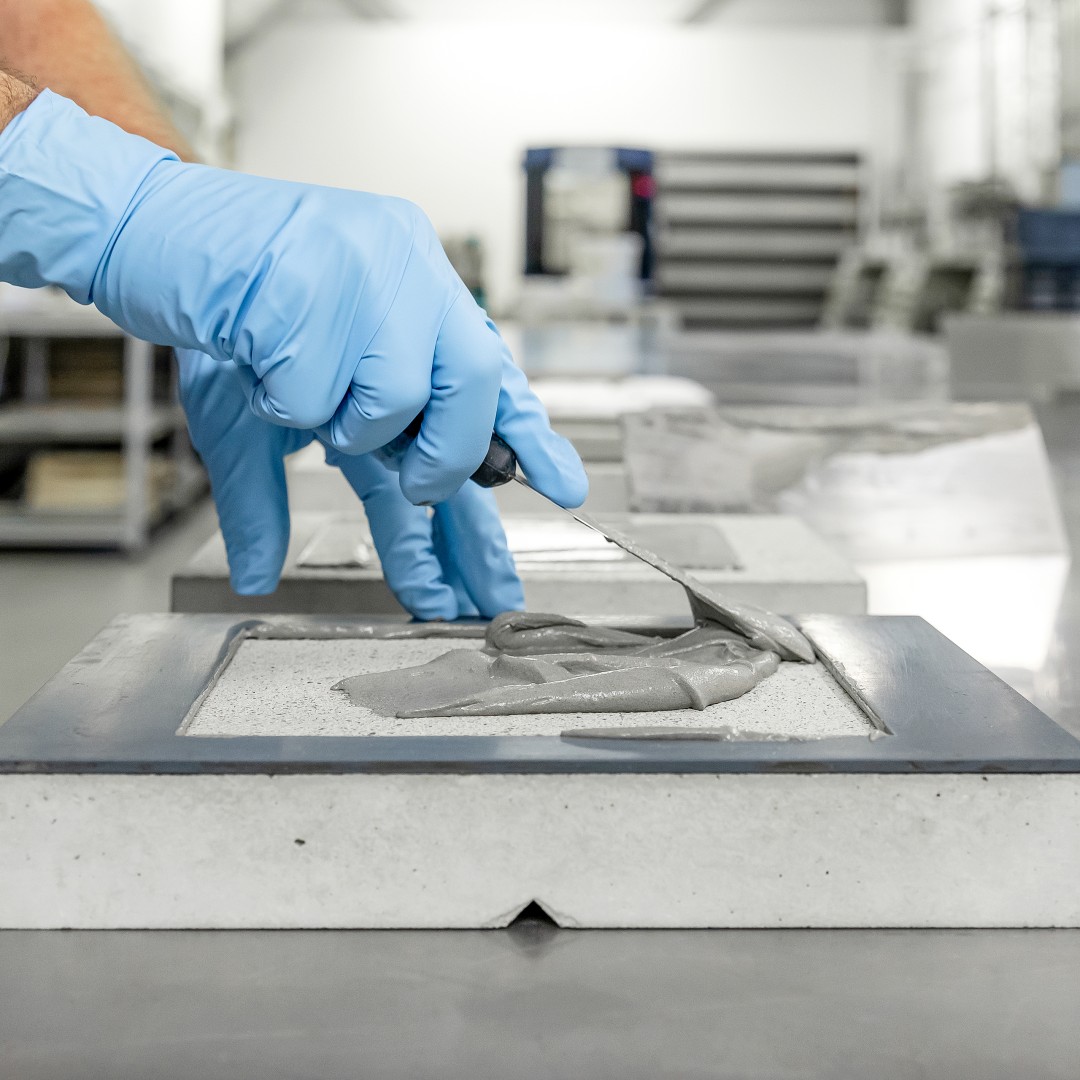
The waterproofing membrane is applied to a concrete test piece as per EN 1062-7.
Good crack-bridging
A further bonus is that the waterproofing membrane is not as tacky. This greatly benefits processing, because the paste-like compound clings less to the trowel and more to where it belongs – on walls or floors. This is a huge advantage for meeting the two-millimeter requirement because waterproofing membranes have to accomplish a number of tasks. One of them is crack bridging – which the binders play a large role in. According to Herold: “As time passes and minor cracks start to appear in plaster or masonry, it is important that the sealing compounds do not fail. And it is the relatively high content of dispersible polymer powder which ensures that this objective is met. It not only acts as a waterproofing agent, but also makes the layer flexible. This prevents cracks from spreading from the substrate to the surface and acting as a conduit for moisture to penetrate.”
The test for this property involves bending a concrete slab coated with the sealing compound until a 0.4-millimeter crack appears. The slab is kept under tension for 24 hours. If no hole appears in the protective layer, the product complies with the EU’s Construction Products Regulation, ETAG 022. This demanding test is passed by waterproofing membranes treated with VINNAPAS® 7150 E. “They hold all the particles together in the intact polymer film while bestowing the necessary flexibility on the matrix.” What is more, by virtue of their low glass transition temperature, waterproofing membranes containing the new WACKER binder can bridge cracks at temperatures as low as 5 °C, as determined in accordance with EN 14891.
“As time passes and minor cracks start to appear in plaster or masonry, it is important that the sealing compounds do not fail. And it is the relatively high content of dispersible polymer powder which ensures that this objective is met. It not only acts as a waterproofing agent, but also makes the layer flexible.”
Dr. Hardy Herold, Lab Manager, WACKER POLYMERS
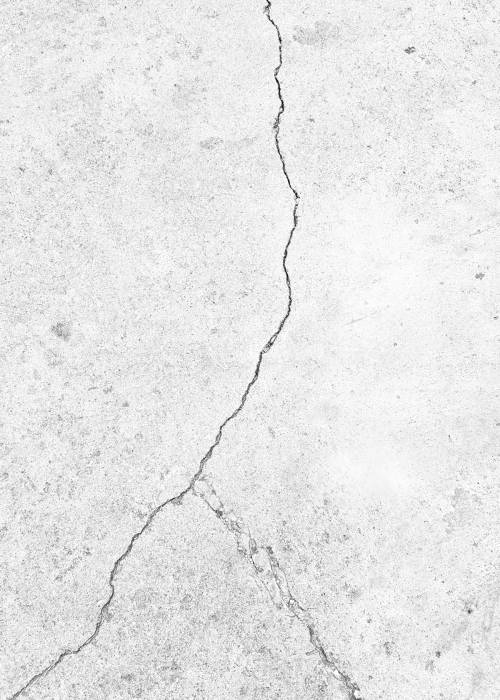
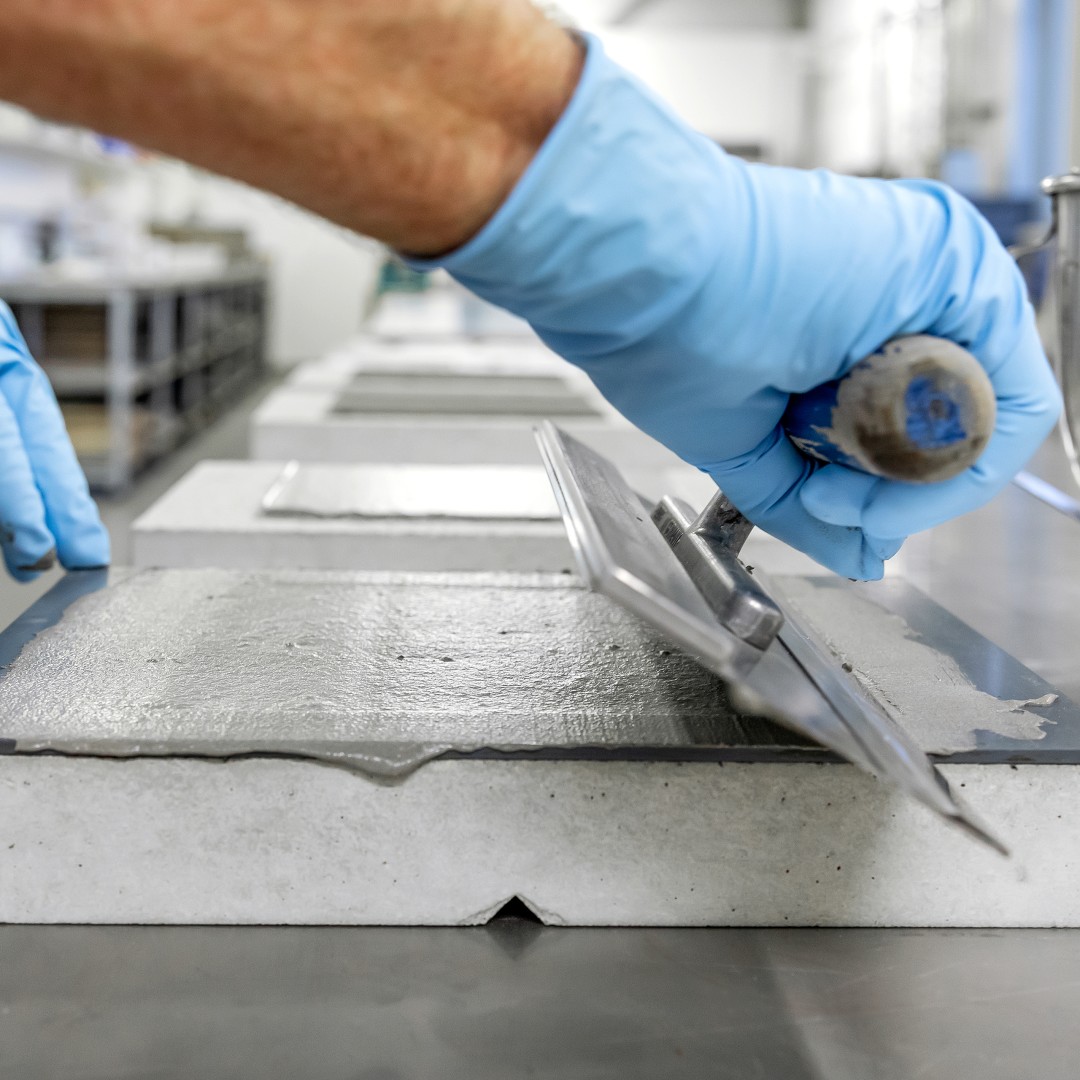
To perform the crack-bridging test as per EN 1062-7, the waterproofing membrane is spread to a defined film thickness.

Preparing samples for testing crack-bridging as per EN 14891.
The dispersible polymer powders provide a further advantage: VINNAPAS® 7150 E does not contain any solvents, plasticizers or film-forming agents and so it does not emit any harmful substances, such as volatile organic compounds (VOCs) – consequently the binders have attained EMICODE® EC1 status, which is reserved for products that have very low emissions and meet the most stringent environmental and health requirements.
“Our binder has even been approved by the German Federal Institute for Risk Assessment for the drinking-water sector,” says Herold. All these talents displayed by the gossamer-thin protective barriers are in addition to their main task of keeping out penetrating water. The WACKER expert cites an impressive figure to confirm that they do just that: waterproofing membranes have to withstand water pressure at 1.5 bar. That is the equivalent of a water column 15 meters high. The two-millimeter-thick layers meet this challenge with ease, ensuring that houses come to no harm.
And thanks to the improved non-slump properties, construction workers in Germany, Austria and Switzerland, with their preference to use trowels, can now reap the benefits of the new high-performance dispersible polymer powders.

Mode of action of polymer particles in A waterproofing membrane
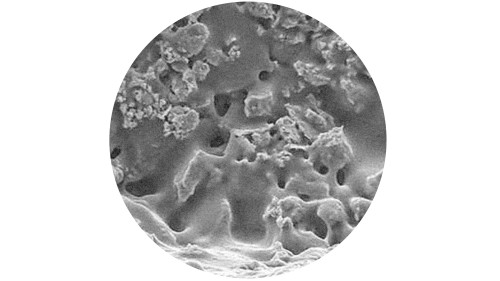
Waterproofing membrane under the microscope
Mode of action of polymer particles in A waterproofing membrane
The special protective colloid of VINNAPAS® 7150 E enables the polymer to interact to optimum effect with the binder, fillers and other additives making up the waterproofing membrane. As a result, once the membrane has set, VINNAPAS® 7150 E forms a closed network of polymer films. It is this network that optimally bonds all the mortar constituents.
Contact
For more information on this topic, please contact:
Mr. Dr. Hardy Herold
Senior Technical Service Manager
WACKER POLYMERS
+49 8677 83-7248
hardy.herold@wacker.com

